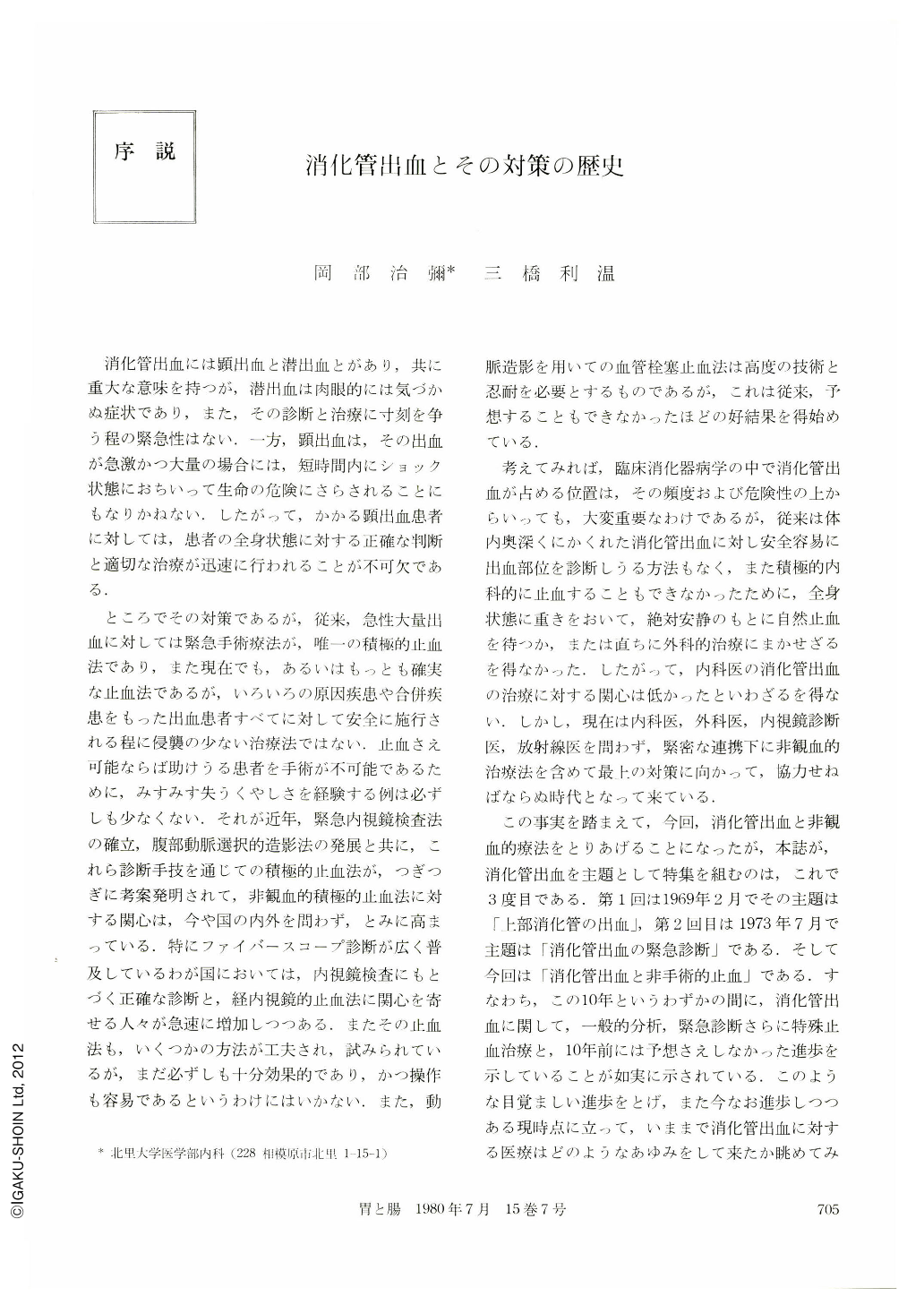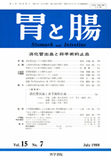Japanese
English
- 有料閲覧
- Abstract 文献概要
- 1ページ目 Look Inside
消化管出血には顕出血と潜出血とがあり,共に重大な意味を持つが,潜出血は肉眼的には気づかぬ症状であり,また,その診断と治療に寸刻を争う程の緊急性はない.一方,顕出血は,その出血が急激かつ大量の場合には,短時間内にショック状態におちいって生命の危険にさらされることにもなりかねない.したがって,かかる顕出血患者に対しては,患者の全身状態に対する正確な判断と適切な治療が迅速に行われることが不可欠である.
ところでその対策であるが,従来,急性大量出血に対しては緊急手術療法が,唯一の積極的止血法であり,また現在でも,あるいはもっとも確実な止血法であるが,いろいろの原因疾患や合併疾患をもった出血患者すべてに対して安全に施行される程に侵襲の少ない治療法ではない.止血さえ可能ならば助けうる患者を手術が不可能であるために,みすみす失うくやしさを経験する例は必ずしも少なくない.それが近年,緊急内視鏡検査法の確立,腹部動脈選択的造影法の発展と共に,これら診断手技を通じての積極的止血法が,つぎつぎに考案発明されて,非観血的積極的止血法に対する関心は,今や国の内外を問わず,とみに高まっている.特にファイバースコープ診断が広く普及しているわが国においては,内視鏡検査にもとづく正確な診断と,経内視鏡的止血法に関心を寄せる人々が急速に増加しつつある.またその止血法も,いくつかの方法が工夫され,試みられているが,まだ必ずしも十分効果的であり,かつ操作も容易であるというわけにはいかない.また,動脈造影を用いての血管栓塞止血法は高度の技術と忍耐を必要とするものであるが,これは従来,予想することもできなかったほどの好結果を得始めている.
Emergency surgical operation has hitherto been the only active way to arrest acute massive hemorrhage from the digestive tract. It is the most reliable measure to control bleeding as well. However, in patients with concomitant other diseases or complications it is too invasive to permit sure and safe operation. At present, the surgical intervention itself can be too dangerous at times. Bleeding cannot be well controlled and not all the patients could be rescued from losing their lives.
On the other hand, in accordance with the assured status of emergency endoscopic examination and selective angiography of the abdominal arteries, nonsurgical active stanching by these means, invented one after another, is becoming effective. Special attention is now given to it both at home and abroad. In Japan, where fiberscopic diagnosis is most widely adopted, special interest is displayed. Although the medical history about hemorrhage of the digestive tract goes back to ancient times, even to the oldest book of medicine, its treatment other than surgical operation had not made much progress. Propagation of fast and accurate diagnosis by applying emergency endoscopy has been expected to show good results in mortality. However, according to the foreign literature the results of leading institutions using emergency endoscopy show that during the recent 20 years the mortality has not been lowered. Nonetheless, progress and propagation of non-surgical methods of arresting hemorrhage have just started, and we are sure it will prove more effective in the near future.
Control of bleeding by endoscopic electrocoagulation or laser coagulation and angiographic embolism has not been completed yet, but in some institutions it is beginning to show excellent results. It is now fully expected to lead to control of bleeding in patients too risky to be operated on or those in need of emergency operation and thus to the lowering of mortality.

Copyright © 1980, Igaku-Shoin Ltd. All rights reserved.


